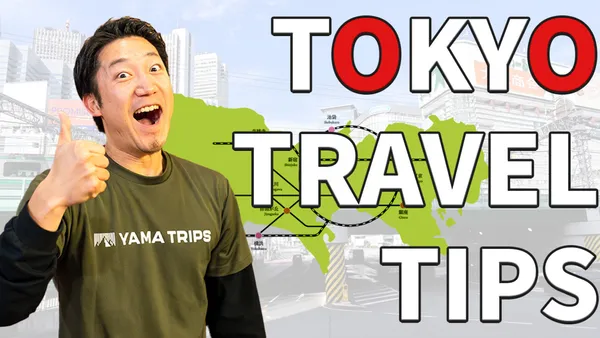Tokyo Transportation and Geography Explained: Getting In, Around & Out
I will break it down into three essential parts: getting in, getting around, and getting out.
I’ve been living in Tokyo for over 8 years now, and I’ve probably done hundreds of excursions in and out of the city—whether it’s weekend trips to the mountains, escapes to the coast, or just figuring out how to get across town without getting lost.
So in this post, I want to break down the basics of how to get into Tokyo, how to move around once you're here, and how to get out when the city gets a little too overwhelming—all based on personal experience. Hope this helps you navigate Tokyo with a little more confidence.
Q1: How do I get to Tokyo from the airport?
There are two main airports that connect you to Tokyo: Narita and Haneda.
Narita Airport is further out—expect around 100 minutes to get into central Tokyo. Most long-haul international flights still land here.
Haneda Airport is way closer—just 30 minutes to the city center. Super convenient if you can find a good flight. The catch? It’s usually more expensive, especially for flights from places like Canada.
If you’re landing in Narita, don’t worry—it’s not that bad. Just be prepared for a bit of a journey after your flight.
Q2: Can you teach me about Tokyo’s geography?
Definitely. This is something I get asked a lot.
The easiest way to understand Tokyo is to imagine it as a circle, and that circle is formed by the Yamanote Line—a loop train that hits most of the major neighborhoods.

On the west side: Shinjuku – busy, energetic, full of action.
On the east side: Tokyo Station – organized, sleek, and your connection hub to the rest of Japan.
Around the loop, you’ll come across:
Akihabara – anime and gaming central
Ueno – museums, pandas, big park
Harajuku – youth fashion and Takeshita Street chaos
Shibuya – home of the famous crossing and startup scene
Shinagawa – business-heavy, also a Shinkansen stop
Ginza – upscale shopping and food that’s worth the splurge
Once you get a feel for this loop, everything in Tokyo starts to make more sense.
Q3: How do I get out of Tokyo?
Look—I love Tokyo. But after a few days of packed trains and nonstop noise, you’re probably going to want a break. I try to get out at least once a week, even if it’s just for a few hours.

Here’s what’s around Tokyo depending on which direction you head:
North (via Ikebukuro):
Saitama has great hikes.
Gunma is all about onsen and skiing.
East:
Chiba is your spot for surfing, seafood, and resort vibes.
South:
Hayama is where Tokyo’s wealthy escape to—ocean views, peaceful beaches.
West:
My favorite: Yamanashi. I’ve probably been there over 100 times. It’s got Mt. Fuji, hot springs, trails, flowers, and some of the best food I’ve had in Japan.
Just below is Shizuoka, which also shares part of Mt. Fuji and has a chill coastal atmosphere.
And of course, if you’re doing a bigger trip—Kyoto, Osaka, etc.—just hop on the Shinkansen (bullet train) from Tokyo or Shinagawa Station. It’s quick, clean, and super efficient.
For a lighter day trip, Yokohama is just south. Great date spot, beautiful bay views, and a massive Chinatown.
That’s a quick breakdown of getting in, around, and out of Tokyo.
Now if you prefer to learn in video format, check out my YouTube channel where I break all this down visually: [YouTube link] 👇
https://www.youtube.com/watch?v=PaW6KPen8Ok&t=21s&ab_channel=YamaTrips

Suchen Sie nach Unternehmungen?
In meinem Reiseführer finden Sie die besten kostenlosen Aktivitäten sowie Reiserouten und Reisetipps, um Ihre Reise unvergesslich zu machen.

